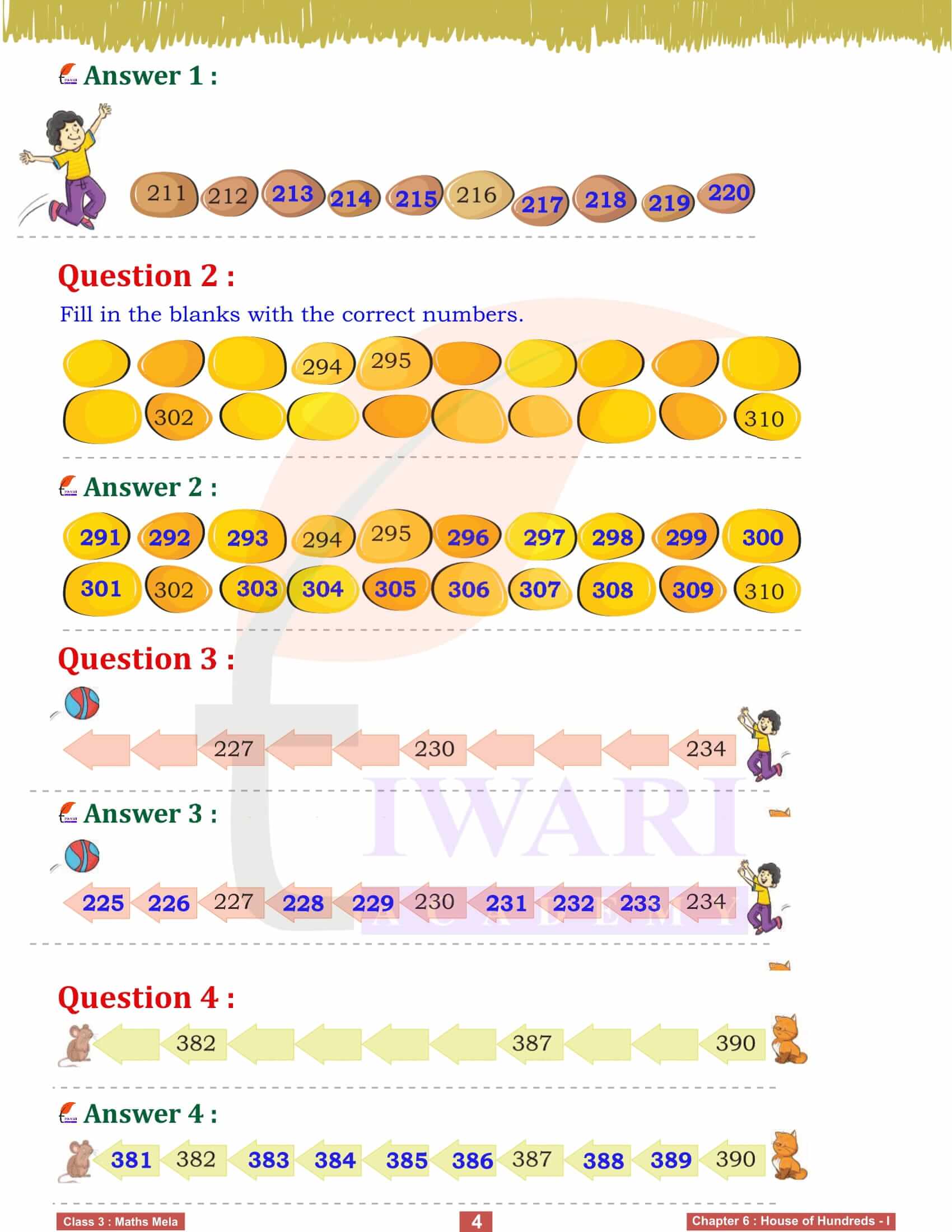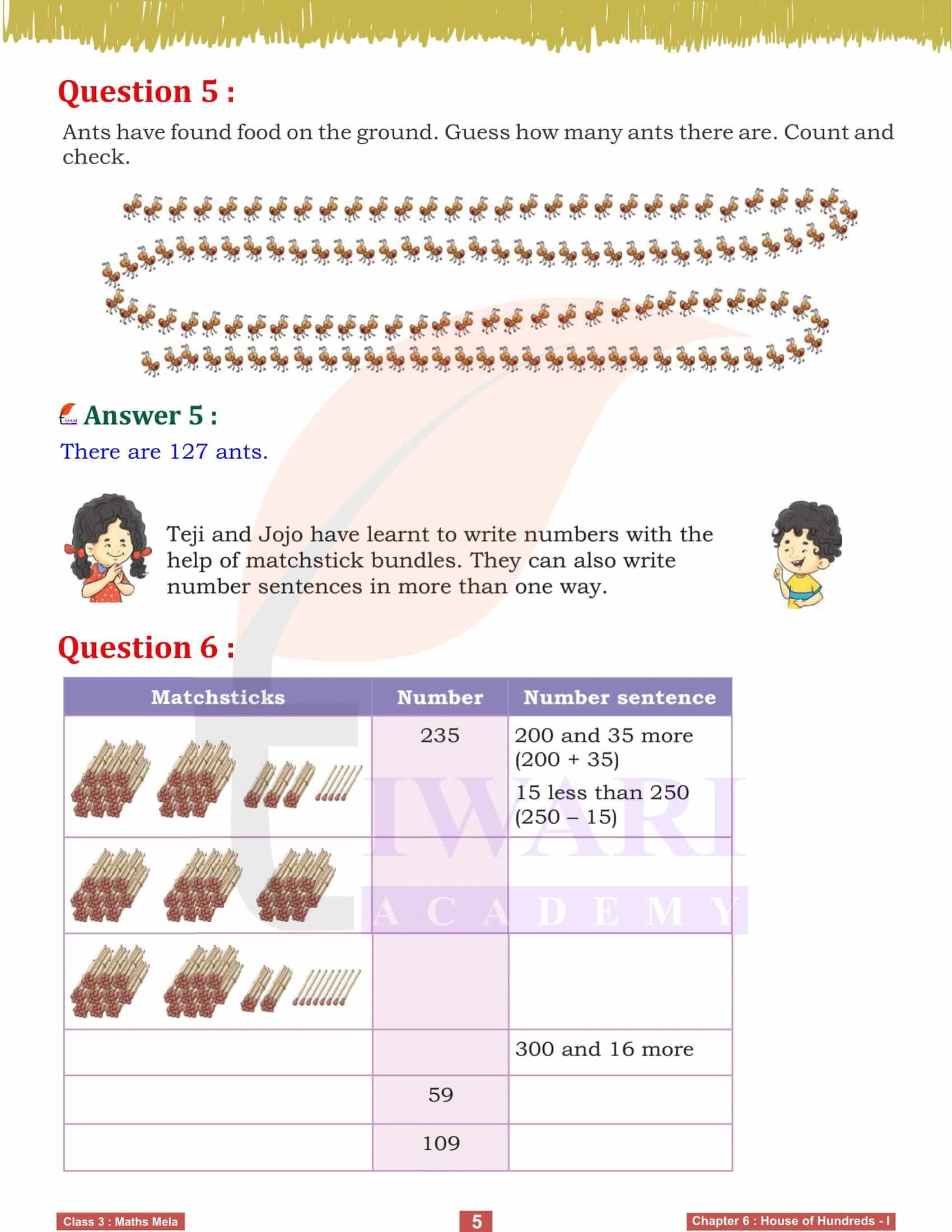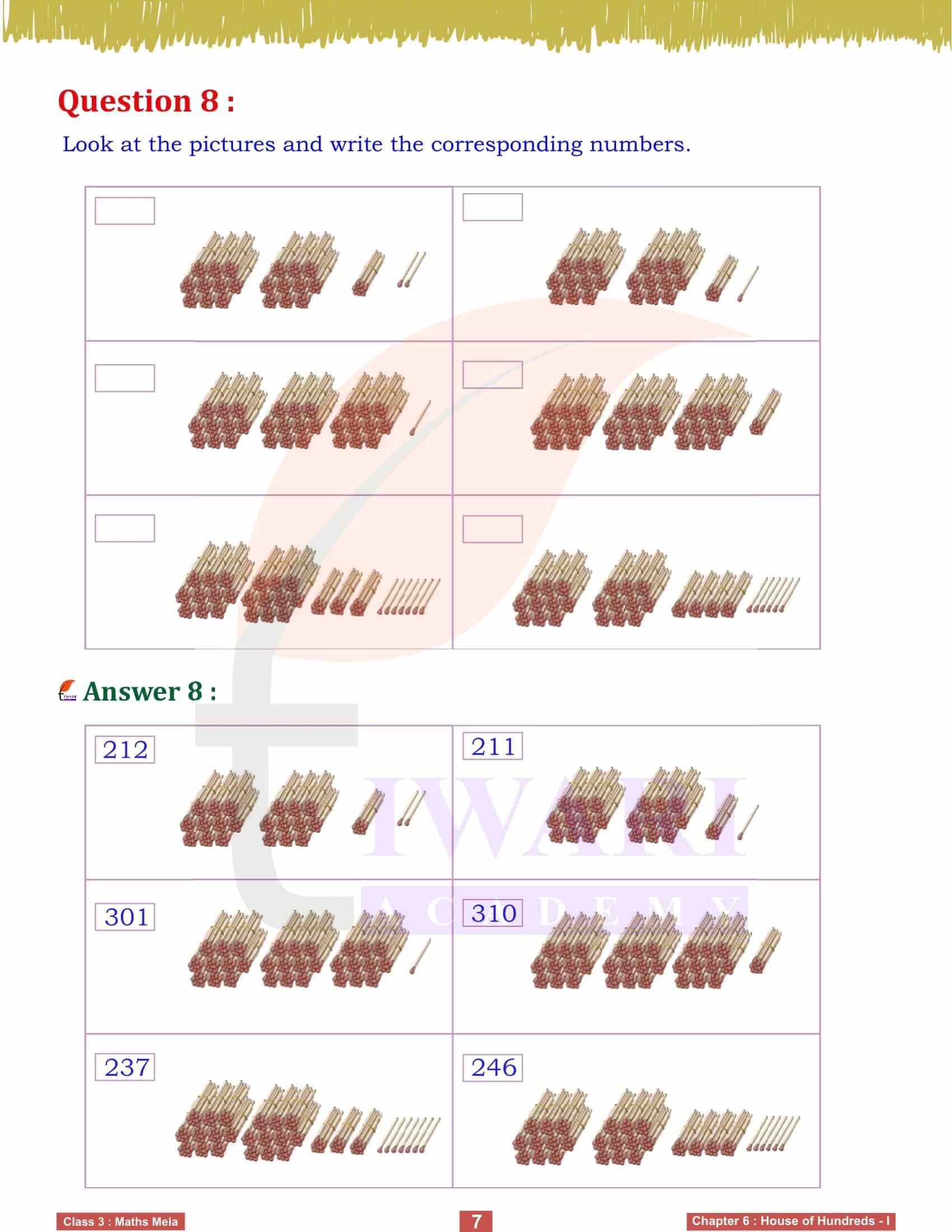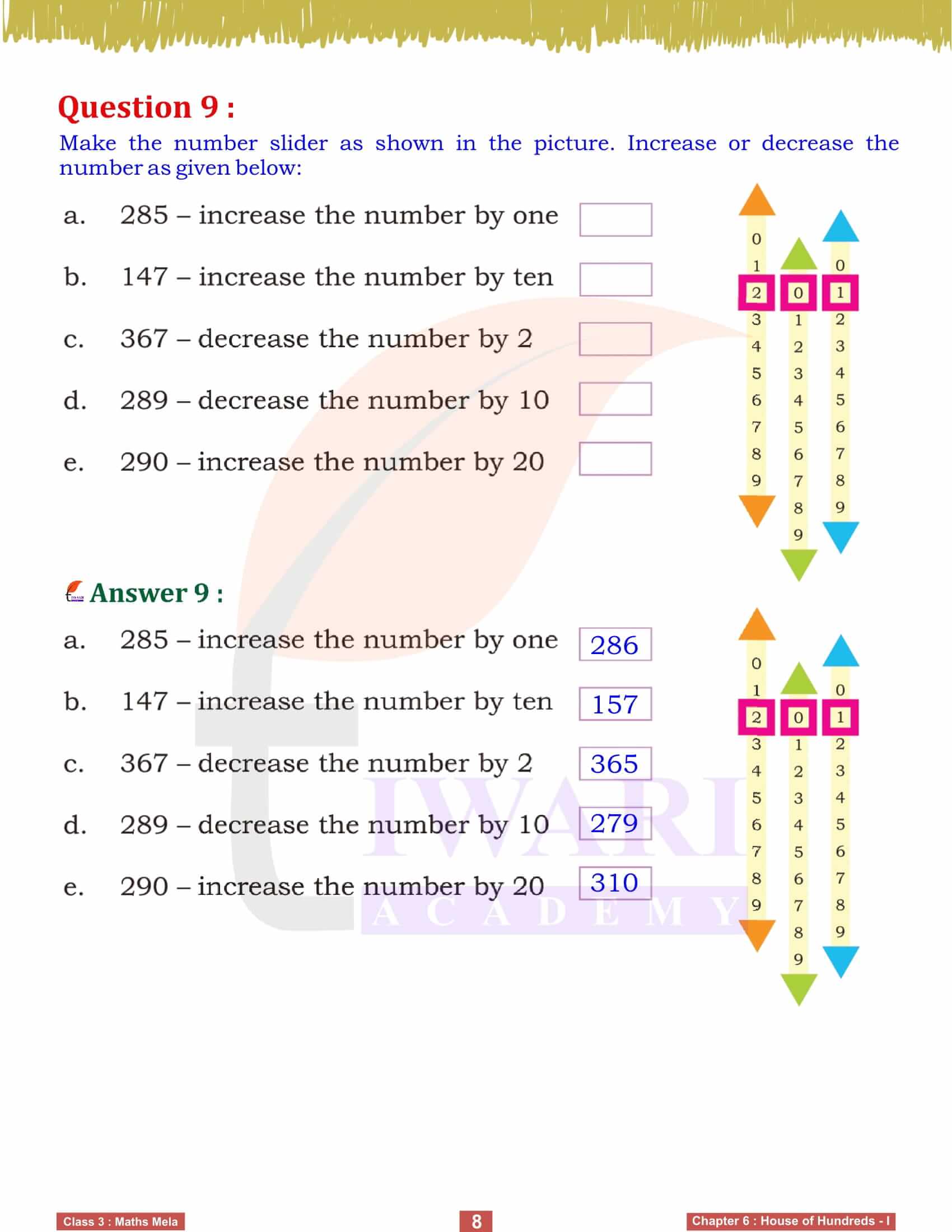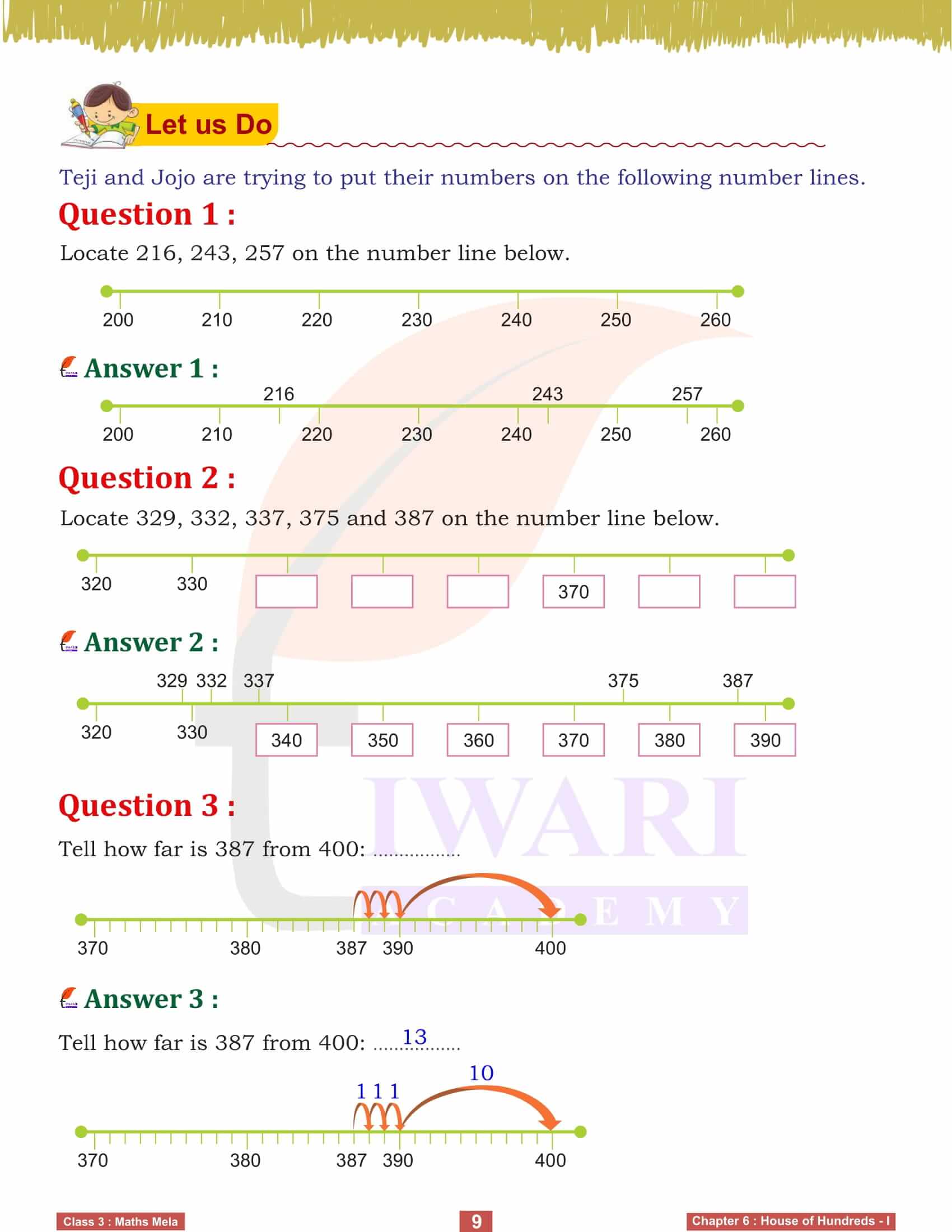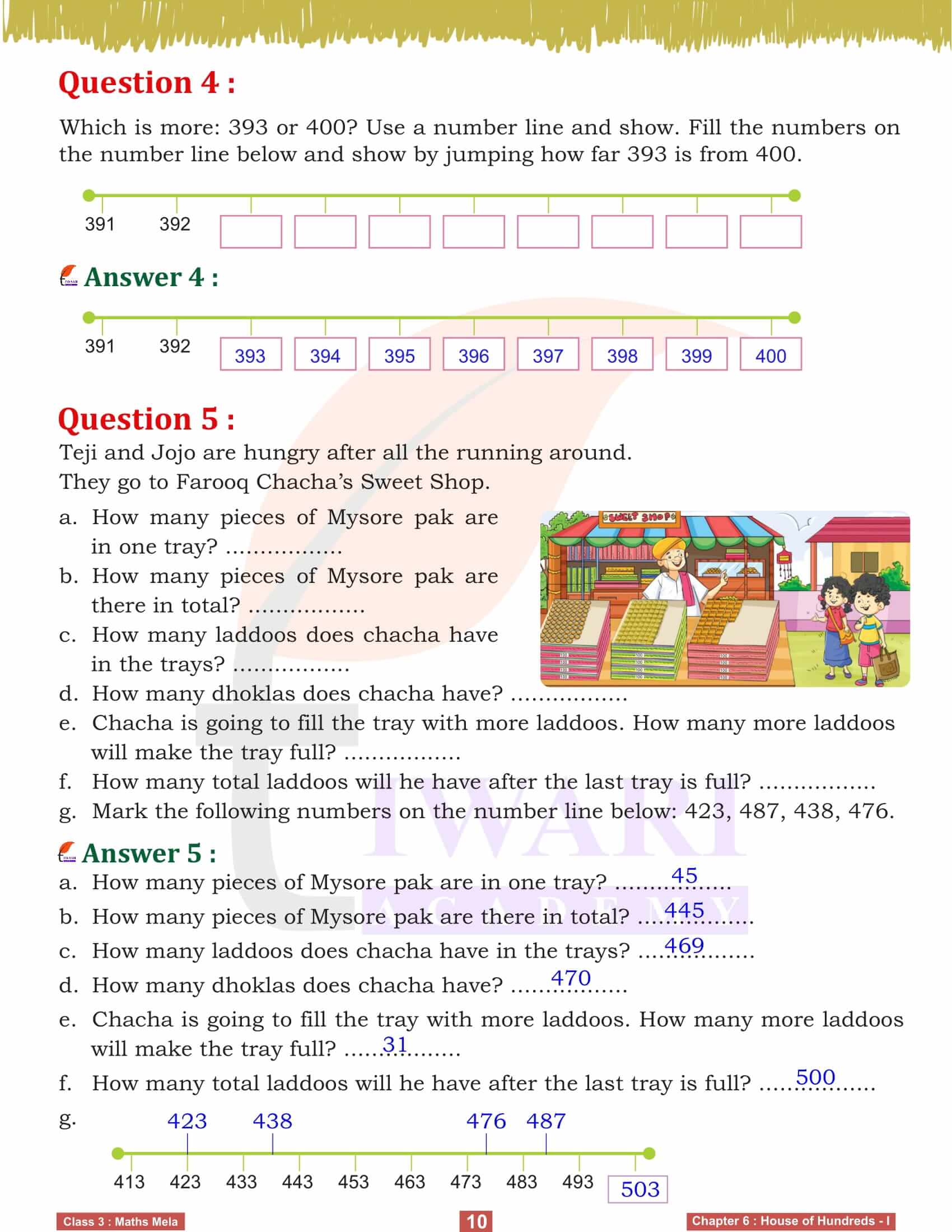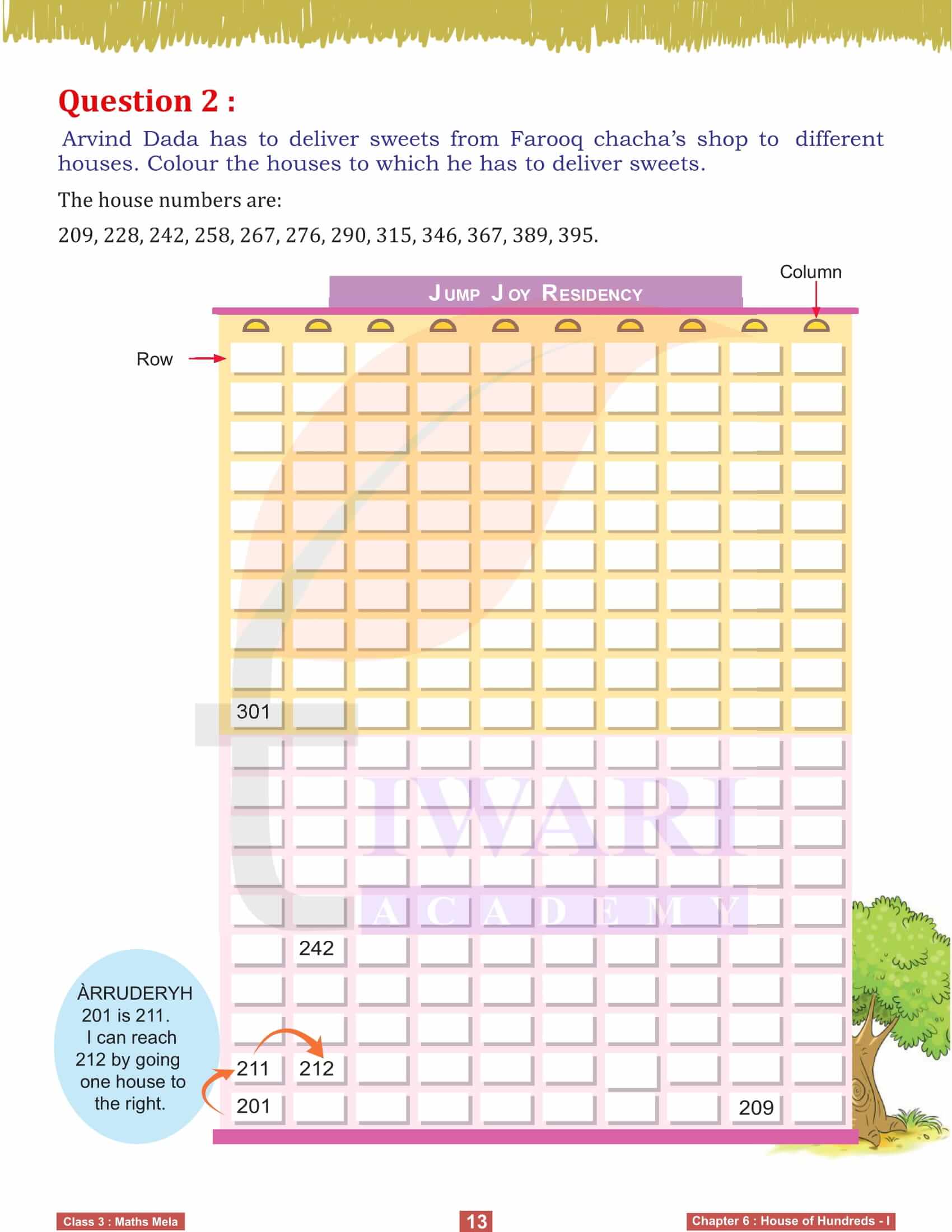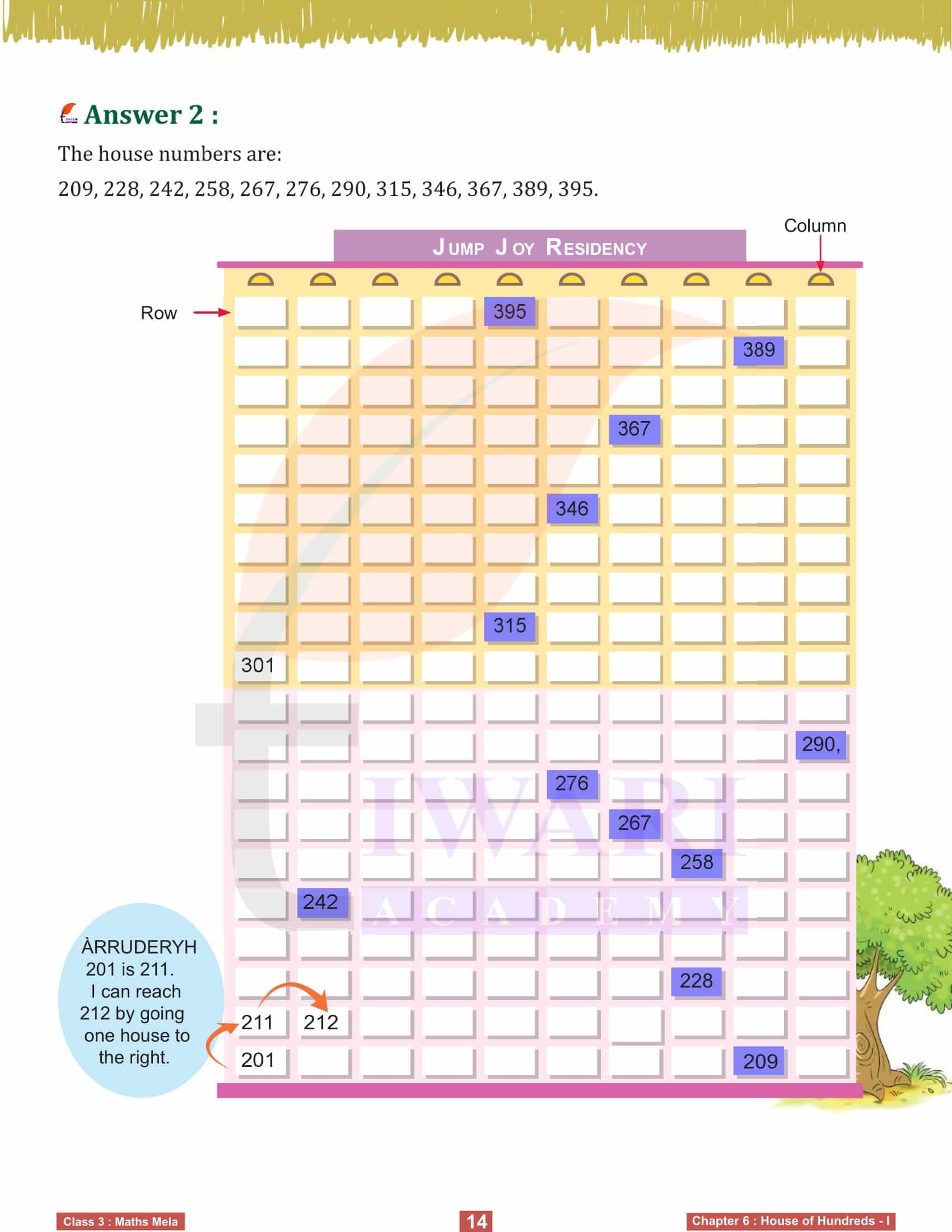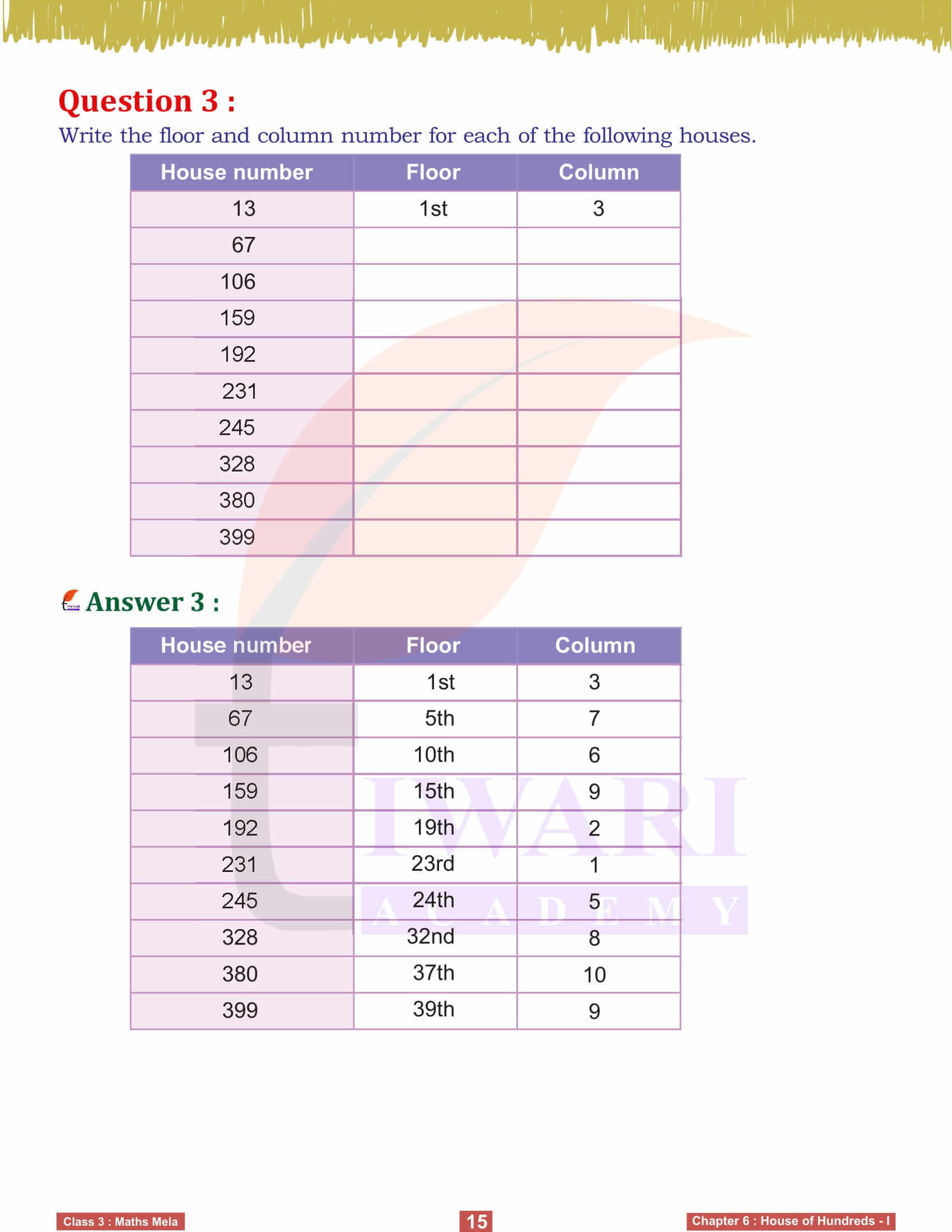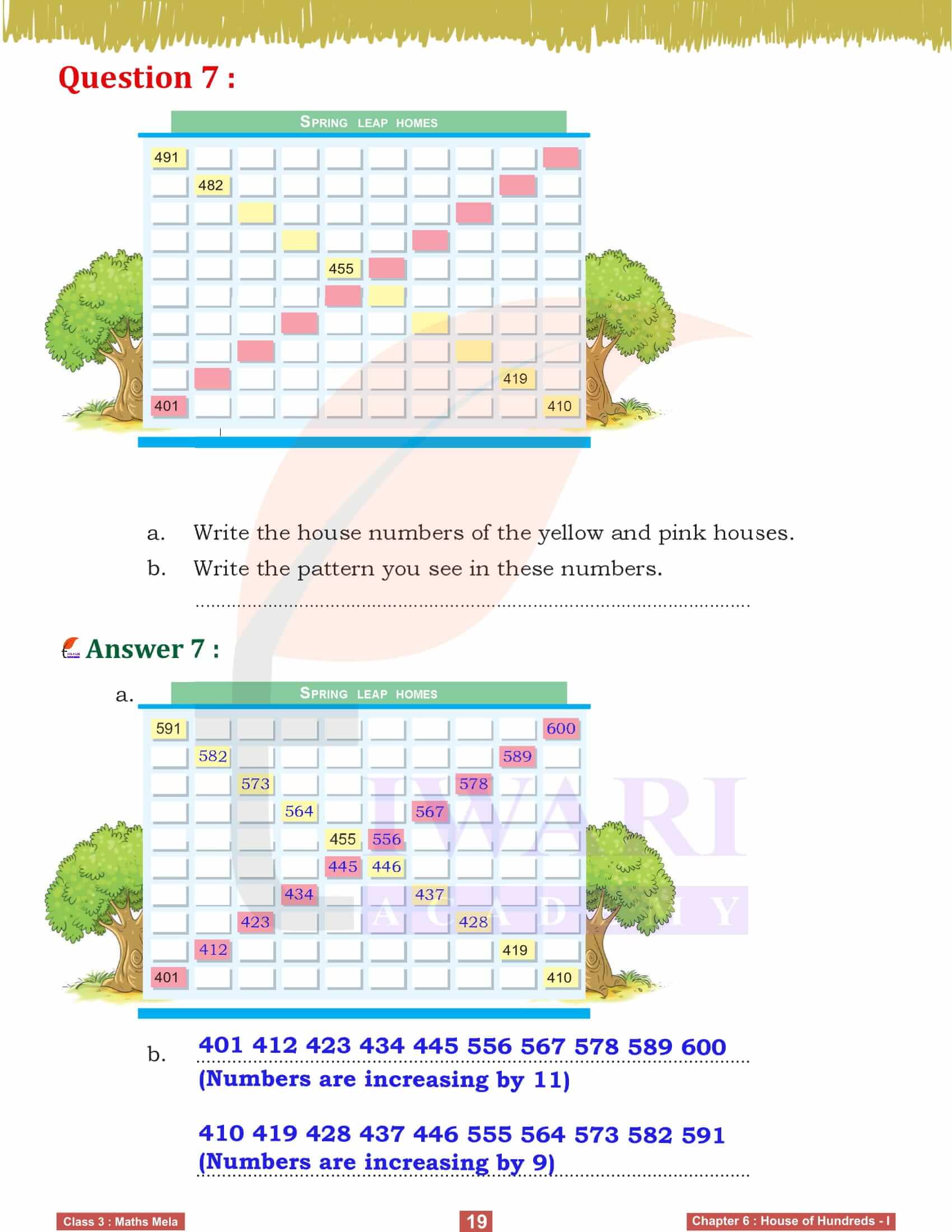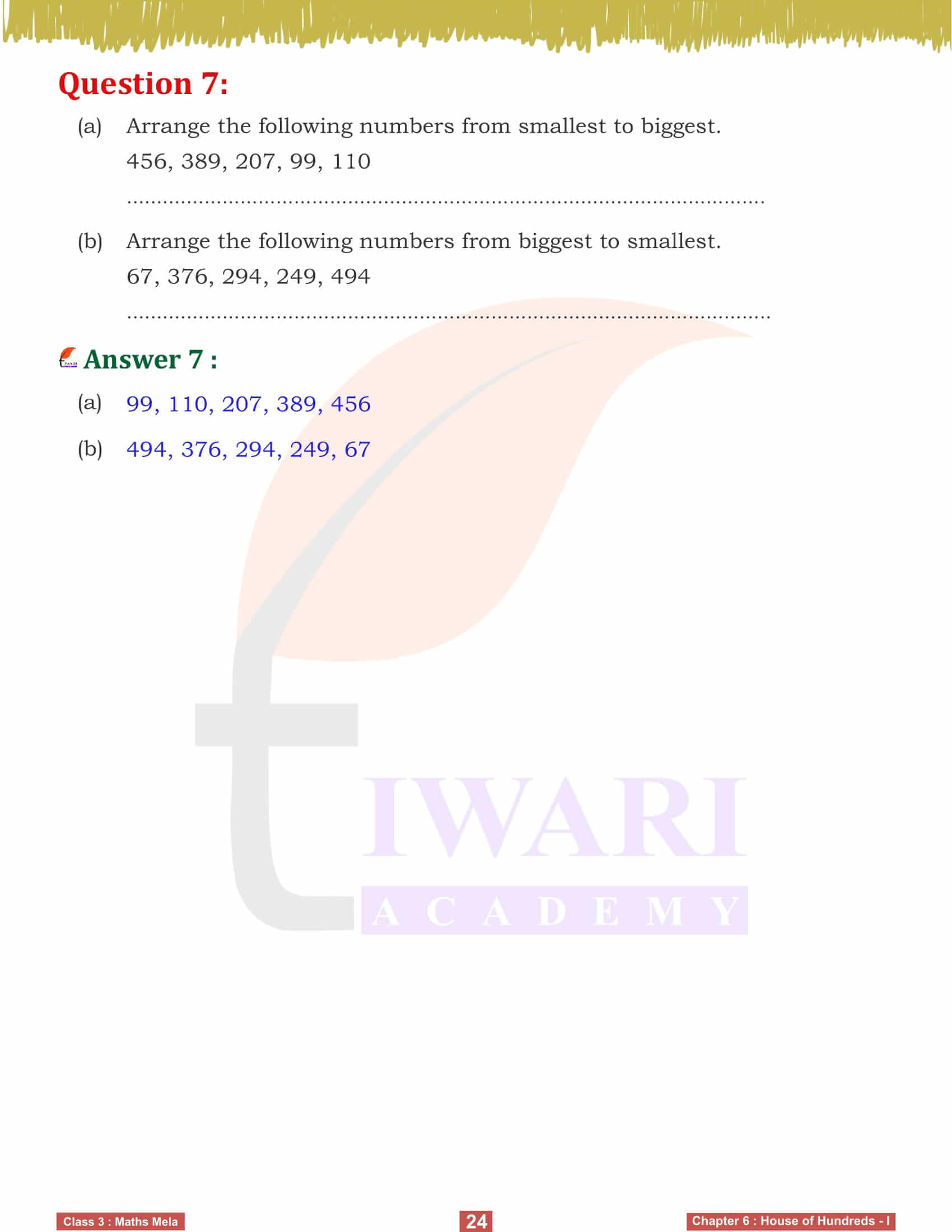NCERT Solutions for Class 3 Maths Mela Chapter 6 House of Hundreds – I in English and Hindi Medium prepared for session 2025-26. Grade 3 Maths Mela solution focuses on the concept of hundreds and place value. Students learn to count in hundreds, understand the significance of place value and perform basic arithmetic operations with three-digit numbers. Engaging activities include building models, solving puzzles and using abacuses to visualize large numbers and enhance numerical fluency.
Study Time Table for Class 3 Maths
Class 3 Maths Mela Chapter 6 House of Hundreds – I
Chapter 6 House of Hundreds – I: Introduction
In Chapter 6, House of Hundreds – I, we embark on an engaging journey to understand counting beyond the basic hundred. This chapter introduces us to the characters Ajji, Teji, and Jojo, who are visiting a fair (mela) where they encounter various activities that involve counting large numbers. The initial part of the chapter focuses on helping students grasp the concept of counting objects beyond 200, demonstrating that the same number names can be used for larger quantities just as they were for smaller ones. This foundation sets the stage for more complex numerical operations and enhances students’ ability to manage larger numbers confidently.

Counting Torans and Bangles
One of the interesting activities in this chapter involves counting torans (decorative garlands) and bangles. Students are encouraged to estimate and then accurately count the total number of these items, starting from basic groups of tens and progressing to hundreds. For example, they learn to count 50 torans in addition to 200, reaching a total of 250. Similarly, Teji demonstrates how to count bangles, adding 80 to 200 to make 280. These exercises not only reinforce counting skills but also introduce the concept of incremental addition, aiding students in visualizing and performing calculations with larger numbers.
Engaging Activities and Problem Solving
The chapter 6 includes various interactive activities designed to make learning fun and engaging. Students are prompted to fill in missing numbers on a tiled path, count the total number of toffees, and use number lines to visualize the placement of different numbers. These tasks encourage critical thinking and problem-solving skills. For instance, students might be asked to determine how many more torans are needed to make 300 or to compare the number of bangles with torans to decide which is greater. Such activities not only enhance numerical skills but also promote logical reasoning and analytical thinking.
Practical Applications with Everyday Objects
To solidify their understanding, students engage in practical applications using everyday objects like matchsticks. They learn to write numbers and number sentences in multiple ways, such as expressing 235 as “200 + 35” or “250 – 15.” This approach helps in visualizing numbers in different formats and understanding their composition. Additionally, exercises involving placing numbers on a number line or predicting the next hundred number provide a hands-on experience that makes abstract concepts more concrete and relatable. These activities foster a deeper comprehension of numbers and their relationships.
Fun Games and Challenges
The chapter also incorporates fun games like the “flag game,” where students guess numbers within a specific range, and a magical count activity that explores patterns in number names. These games make learning enjoyable and stimulate curiosity about numbers. For example, the flag game encourages students to use logical deduction to guess the correct number, while the magical count activity reveals intriguing patterns, such as how the name “twenty-three” leads to “eleven” and eventually “four,” sparking discussions about numerical sequences and patterns.
Conclusion and Reinforcement about Class 3 Maths Chapter 6
In conclusion, Chapter 6 “House of Hundreds – I” provides a comprehensive and engaging approach to understanding and working with large numbers. Through a mix of storytelling, practical applications, interactive activities, and fun games, students build a strong foundation in counting beyond hundreds. These experiences not only improve their numerical skills but also prepare them for more advanced mathematical concepts in the future. By the end of the chapter, students should feel more confident in their ability to handle larger numbers, understand their properties, and apply this knowledge in various real-world contexts.
Related Links



